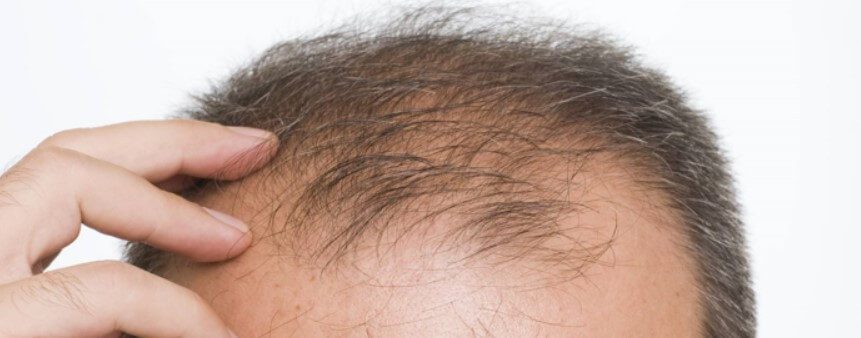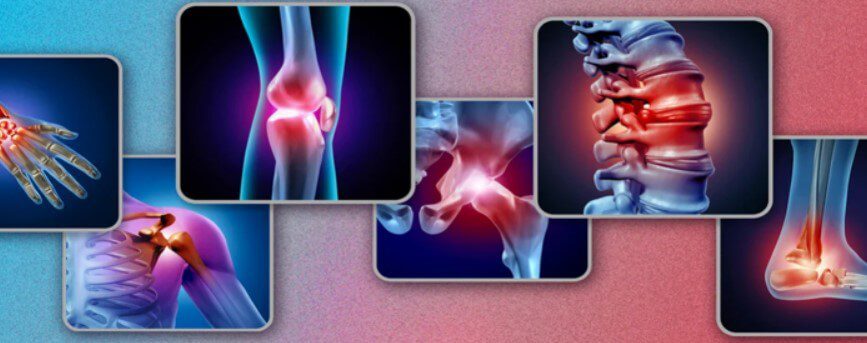
by Shoot To Thrill Media | Oct 21, 2025 | Age Management
Medical Review: Dr. Gerald Mastaw, MD – Board-Certified Physician
Last Updated: October 2025
Understanding the Science of Aging
Aging is a gradual, lifelong process that begins earlier than most realize often as early as your 20s. Over time, every organ and tissue experiences cellular wear and reduced regenerative capacity. These microscopic changes can influence how we feel, look, and function.
While aging cannot be stopped, scientific advances in regenerative medicine are exploring ways to help the body age more gracefully, supporting recovery, vitality, and overall well-being.
How Aging Affects the Body
Common age-related concerns include:
- Changes in vision or hearing
- Persistent fatigue or low energy
- Fine lines, wrinkles, or thinning skin
- Muscle loss and joint stiffness
- Sleep disruption and slower recovery
- Memory lapses or brain fog
- Bladder or bowel changes
These symptoms often occur simultaneously, reflecting cellular aging—when cells lose efficiency in repair, energy production, and immune balance.
Traditional Approaches to Age Management
Most conventional age-management strategies address individual symptoms rather than underlying biological aging. Common options include:
- Medications: for joint discomfort, sleep, mood, or hormone support
- Cosmetic treatments: fillers, Botox®, or resurfacing to enhance appearance
- Lifestyle changes: diet, exercise, stress reduction, and quality sleep
- Hormone therapy: when clinically indicated
- Supplements: vitamins, antioxidants, or collagen to maintain general wellness
While these methods can help manage effects of aging, they typically do not address cellular regeneration or tissue repair.
A Modern Regenerative Approach
Regenerative medicine, including stem cell and exosome-based research, is an emerging field focused on supporting the body’s natural healing mechanisms.
Why Stem Cells Are Being Studied
Stem cells are unique because they can:
- Differentiate into specialized cell types
- Release growth factors and exosomes that encourage tissue repair
- Help modulate immune responses
- Support healthier function in muscles, skin, and organs
Important:
Stem cell therapy for age management is experimental and not FDA-approved. Current research focuses on safety, dosing, and long-term effects. Any use should be discussed with a qualified physician experienced in regenerative medicine.
Recent Human Studies on Umbilical Cord MSCs and Exosomes
2025 – Alzheimer’s Disease and Cognitive Aging
Title: Allogeneic Mesenchymal Stem Cell Therapy with Laromestrocel in Mild Alzheimer’s Disease: A Randomized Controlled Phase 2a Trial
Journal: Nature Medicine – Read Study
Summary:
This randomized Phase 2a trial studied patients with mild Alzheimer’s disease, a hallmark of age-related neurodegeneration. Participants received several infusions of donor-derived mesenchymal stem cells (MSCs) or placebo.
Results showed slower cognitive decline and better preserved brain volume in the MSC-treated group. No major adverse events were observed, indicating a favorable safety profile. Researchers emphasized the need for larger trials to confirm potential neuroprotective effects.
2024 – Aging Frailty and Physical Function
Title: Safety and Efficacy of Umbilical Cord Tissue-Derived MSCs in Patients with Aging Frailty: A Phase I/II Randomized, Double-Blind, Placebo-Controlled Study
Journal: Stem Cell Research & Therapy – Read Study
Summary:
In this trial, older adults with frailty received a single IV infusion of UCT-MSCs or placebo.
At six months, the MSC group showed improved walking speed, grip strength, and self-reported vitality versus placebo, without serious side effects. Investigators concluded the therapy was safe and merited larger follow-up studies to explore improvements in mobility and resilience.
2024 – Exosomes in Skin Rejuvenation
Title: Clinical Applications of Exosomes in Cosmetic Dermatology
Journal: Frontiers in Pharmacology – Read Study
Summary:
In a 28-person clinical study, participants underwent microneedling on both sides of the face. One side received serum containing MSC-derived exosomes, the other served as control.
After 12 weeks, the exosome-treated skin showed greater wrinkle reduction, improved firmness, and hydration, with no serious side effects. Researchers found that exosome-enhanced microneedling can safely stimulate collagen remodeling and improve skin tone, offering a cell-free regenerative option.
Considering Regenerative Medicine for Age Management
If you’re exploring ways to maintain wellness as you age, regenerative medicine research may offer new insights into how the body repairs itself.
Before considering treatment:
- Consult a licensed regenerative medicine specialist for personalized guidance.
- Review your medical history, medications, and overall health.
- Understand the experimental status of stem cell and exosome therapies.
- Discuss alternative or complementary options, including clinical trials.
At Stemedix, our team follows evidence-informed, research-based protocols designed to prioritize safety, transparency, and patient education. We help patients understand emerging regenerative approaches and how they fit within a broader wellness plan.
Medical Disclaimer
This page is for educational purposes only and does not constitute medical advice.
Stem cell and exosome therapies for age management are not FDA-approved, and individual outcomes may vary.
Always consult your healthcare provider before pursuing any medical or wellness treatment.
References
- Kim H. et al. Allogeneic MSC Therapy with Laromestrocel in Mild Alzheimer’s Disease. Nature Medicine, 2025. DOI Link
- Tompkins C. et al. Umbilical Cord Tissue-Derived MSCs in Aging Frailty. Stem Cell Research & Therapy, 2024. Full Text
- Zhang L. et al. Clinical Applications of Exosomes in Cosmetic Dermatology. Frontiers in Pharmacology, 2024. Full Text
Interested in learning more? Contact us to schedule a consultation and find out if regenerative medicine for age management is right for you.
Search our blog page to learn more: https://stemedix.com/blog/

by Stemedix | Jun 3, 2024 | Age Management, Hair Regrowth, Health Awareness, PRP, Regenerative Medicine, Stem Cell Research, Stem Cell Therapy
Your hair can be part of your identity. For some people, their hair is a symbol of their spiritual beliefs. Whether you’re focused on beauty and aesthetics or a deeper meaning behind your hair, hair loss can be devastating.
For some people, regenerative medicine is an innovative, research-based solution to hair loss. Learn more about how regenerative hair loss treatments may restore your healthy locks.
How Hair Loss Is Related to Your Well-Being
Losing hair is often a symptom of an underlying health problem. While some people experience hair loss due to genetics or lifestyle choices, others may face lurking medical issues. Here are some of the ways your hair growth (or lack thereof) is related to your physical and mental wellness.
Self-Esteem and Confidence
You may feel embarrassed, ashamed, or self-conscious if you start to lose your hair. Both men and women struggle with remaining confident after significant hair loss. Your mental well-being may suffer if you can’t get your hair to grow back on its own.
Some cultures associate losing hair with aging and other stereotypes. This can be devastating for someone going through medical, hormonal, or age-related hair loss. Healthy hair regrowth may help you regain the confidence you lost.
Hormones
Your hormones are chemical messengers that regulate all of your body’s processes. Hair growth is tied to your hormones, and any fluctuations or declines in certain hormones can lead to losing hair. Think about post-pregnancy hair shedding; this happens because your body’s cascade of pregnancy hormones changes.
Hormonal changes as you get older can affect your hair. Age-related hair loss and thinning primarily affect women due to declines in estrogen production, but this problem can affect men as well.
Genetic Baldness
Male-pattern baldness is passed down through families. If you carry the gene for this condition, you may experience very early balding, starting in your 20s or 30s. This can change your appearance and make you feel older than you really are.
There are no ill physical effects from male-pattern baldness besides losing hair. However, you may experience poor mental health as a result of your unwanted early hair loss and thinning.
There is no cure for male-pattern baldness, but you can take steps to treat it. Regenerative medicine is here to intervene and treat hair loss in a natural, science-based way.
ExogroPro: The Latest in Hair Regrowth Science
When you experience hair loss of any kind, you probably have two priorities — prevent further hair loss and replenish your missing hair. ExogroPro, a professional-grade hair loss solution, addresses both of these problems at once.
How It Works: Preventing Further Hair Loss and Regrowing Lost Hair
ExogroPro works to stimulate your hair follicles, causing them to grow healthy hair again. This treatment uses the power of specific exosomes, which carry materials between your cells.
ExogroPro is designed to send signals to your hair follicles that stimulate hair growth. Because of exosomes’ extracellular communication abilities, they may be able to revive “dead” hair follicles on your head.
Because of this treatment’s therapeutic effects on hair follicle health, it may help prevent further hair loss and thinning. By rejuvenating your hair follicles and preventing them from going dormant, ExogroPro offers a possible solution to unwanted lost hair.
The Procedure: What to Expect
The premium patent pending ExogroPro formula is injected into the scalp to deliver exosomes to the hair follicles. These exosomes originate from human stem cells, specifically mesenchymal stem cells. This is just another way we can harness the power of stem cells to regenerate and repair damaged tissues within your body.
After two to six months, you may notice your hair growing back thicker and fuller than before. The results window varies, but one thing is certain — hair regrowth is worth the wait.
The Benefits of Choosing Regenerative Medicine for Hair Growth
With many prescription hair growth drugs on the market, you may be wondering — why choose ExogroPro? Here are the major benefits of choosing regenerative medicine for hair regrowth and thickening.
May Be More Effective Than Traditional Treatments
There are numerous treatments for hair loss, including PRP injections, topical oils, and more. These have varying efficacy and likely won’t give you the results you’re looking for. Prescription-strength hair growth drugs may not work for you either, resulting in frustration and discouragement.
Regenerative medicine harnesses the power of science and innovation. By using human stem cells, we work with the body processes already in place within your system. Exosomes may prove to be more effective and efficient than other hair loss solutions.
Drug-Free Therapy
Exosomes are naturally found in the human body. When you choose ExogroPro, you choose drug-free natural therapy for your hair and scalp.
While prescriptions can be helpful for some people facing hair loss, it’s understandable to want a natural alternative. We work with your natural healing and regrowth processes, not against them.
Dual-Action Treatment: Prevention and Active Regrowth
It’s impressive to consider how ExogroPro not only prevents further lost hair but can revive faulty hair follicles. This dual mechanism is key to getting the full head of hair you’re after. If it works for you, you’ll no longer have to mourn the hair you’ve lost — you could potentially get it back!
Encourages Hair Health
Solving hair loss isn’t just about replacing lost hair. It’s also about growing healthy, strong locks that can withstand damage and remain intact. ExogroPro promotes hair follicle health by improving cellular communications in the injected tissues. What’s more promising than the idea of a full, healthy head of hair after hair loss and thinning?
Combating Hair Loss and Thinning with Medical Science
It’s important to seek evidence-based treatments for your hair loss. No matter what the root cause of your hair problems is, you may find regenerative medicine to be a viable solution.
You don’t have to mourn your lost hair forever. Regenerative medicine is at the forefront of medical innovation and science, which could spell good news for your hair.

by Stemedix | May 20, 2024 | Multiple Sclerosis, Age Management, Health Awareness, Regenerative Medicine, Stem Cell Research, Stem Cell Therapy
Some health conditions don’t yet have definite cures. Multiple sclerosis (MS) is one of them. While there is no known cure, several new treatments are emerging that show great potential in treating MS. Stem cell therapy for multiple sclerosis can be life-changing. If you struggle with debilitating symptoms and everyday life is painful for you, regenerative medicine may be able to help. Here’s everything you need to know about using stem cell treatments to address MS symptoms.
Multiple Sclerosis: Causes and Symptoms
Multiple sclerosis is a complex disease that researchers are still studying. Knowing the potential causes and common symptoms can help you monitor your condition and recognize when to seek treatment.
How MS Develops and What Causes It
Multiple sclerosis is a neurodegenerative disease. Your immune system starts attacking your nervous system, causing damage over time. Specifically, your immune system degrades the protective coating on your nerves. This coating is called the myelin sheath, and it’s essential for proper nerve function.
The faulty immune response in patients with MS is triggered by certain environmental factors that turn on specific genes. In other words, you may be genetically predisposed to MS, and certain environments “switch on” the genes that activate the disease.
Scientists don’t yet know exactly what causes this activation, but it may be related to lifestyle factors. Smokers and people with inflammatory diets are at higher risk for developing this condition.
Common MS Symptoms
You may experience a combination of common MS symptoms. Certain symptoms may flare up and then go away for a while. During flare-ups, you’re more likely to experience pain and discomfort.
The most common symptoms of multiple sclerosis include:
- Numbness and tingling
- Vertigo
- Skin conditions
- Balance problems
- Difficulty with coordination
- Problems swallowing
- Trouble speaking
- Vision disturbances
- Eye pain
- Seizures
- Hearing problems or loss
- Intense nerve pain
Since MS affects your nervous system, it makes sense for it to impair your balance, coordination, and senses. This disease may eventually affect your optic nerve, or the nerves involved in hearing and auditory processing.
How MS Can Progress Without Treatment
You aren’t doomed to a life of pain and suffering if you’ve been diagnosed with MS. However, it can be a progressive neurodegenerative disease if left untreated.
Some patients experience a steady progression in sensory and motor problems because of MS. Others will have periodic flare-ups that go away and come back randomly. You may notice that stress, lack of sleep, and poor nutrition trigger flare-ups for you.
If left completely untreated, the protective coatings on your nerves will start to degrade, and the affected nerves will stop working properly. This is what leads to trouble swallowing, walking, speaking, seeing, and hearing.
Innovative treatments like stem cell therapy may improve your prognosis with MS. Regenerative medicine may help repair some of the nerve damage caused by your immune responses, addressing the root cause of your symptoms.
What Is Stem Cell Therapy for MS?
Stem cells are known for their ability to regenerate and repair tissues in the body. In lab environments, stem cells can be “programmed” to develop into the necessary cells needed for wound healing, tissue regeneration, and reducing inflammation.
These restorative cells can also renew themselves, keeping injured and diseased areas supplied with plenty of stem cells to continue healing and repairing themselves. That’s why stem cell therapy is so potent — once the stem cell repair process starts, it can continue on its own.
Multiple sclerosis leads to nerve and tissue damage over time, and stem cells may be able to reverse some of that damage. By modulating your immune responses, combating inflammation, and replacing damaged tissues, stem cells can significantly improve your MS symptoms.
The Benefits of Stem Cell Therapy for Multiple Sclerosis Patients
You have several options when it comes to MS treatments. There are medications and alternative therapies designed to combat MS symptoms and nerve damage. However, stem cell therapy offers unique advantages you should consider before selecting your treatment(s).
Drug-Free Therapy
Stem cells are not pharmaceutical compounds. They are natural cells every human body produces and keeps around for wound healing and tissue repair. Since this therapy is drug-free, there are fewer risks involved — like medication side effects and allergies.
Some patients choose to take MS medication in conjunction with stem cell therapy. Only you can decide what treatment routes are best for you. However, if you want to go drug-free, stem cell therapy is a potent option for you.
Get Behind the Symptoms
Regenerative medicine does more than just mask your symptoms or cover up pain. It gets to the root causes of your MS challenges, including nerve damage and inflammation. By using stem cells to target areas of damage and discomfort, you may be able to improve your future with this disease.
Innovative Treatments
Regenerative medicine is at the forefront of medical science. Researchers are learning new information about MS and stem cells every year, and you can be a part of this experience. By choosing stem cell therapy, you get to benefit from the latest advancements in natural healing and recovery.
Slower Disease Progression
Since MS can be progressive, it’s important to seek treatment as soon as possible. Stem cell therapy may prevent your symptoms from getting worse and debilitating you, as well as improve your future health outcomes with Multiple Sclerosis. Whether you suffer from periodic flare-ups or progressive degeneration, regenerative medicine can help.
Navigating Your Future With MS
It can be devastating to receive a diagnosis like multiple sclerosis. However, it’s important not to lose hope. As medical science progresses forward, there are new and innovative treatments around every corner.
Regenerative medicine gives you the opportunity to take advantage of the latest advancements in this area of science and research. You can use it in conjunction with other interventions as specified by your physician.
No matter what treatments you choose to battle your MS symptoms, know that you’re never alone. Your condition does not define you.

by Stemedix | May 6, 2024 | Age Management, Health Awareness, Neurodegenerative Diseases, Parkinson's Disease
Parkinson’s disease affects your fine and gross motor skills. It might seem counterintuitive to try to exercise after your diagnosis, but physical activity is crucial. For seniors with Parkinson’s disease, exercise can boost mood, improve physical health, and improve motor skills.
Not sure where to start? Even just a few minutes of gentle exercise each day can help. Here’s what you need to know about exercising as a senior with Parkinson’s.
How Parkinson’s Disease Affects Your Nervous System
Parkinson’s affects sensory and motor skills in your body due to its effects on your nervous system. Your nerves are responsible for coordinating movements and sending signals to your muscles. When this system is flawed, motor problems arise.
Low Dopamine Levels
Patients with Parkinson’s disease have lower-than-normal levels of dopamine, a neurotransmitter in the brain. Dopamine is very important in voluntary movement. Parkinson’s is a neurodegenerative condition, which means it can progress over time as dopamine levels can steadily decline.
Problems With Executive Functioning and Cognition
Thinking, speech, and executive functioning are all impacted by Parkinson’s disease. Seniors with Parkinson’s may have difficulty feeling mentally clear, planning things, speaking, and remembering.
It makes sense that a neurodegenerative condition like Parkinson’s would impact a person’s cognition. After all, these changes originate in the brain. Luckily, exercise may have a protective effect for seniors with Parkinson’s-related cognitive problems.
Motor Problems
The symptoms of Parkinson’s disease include many different motor control problems. Often, tremors or problems balancing are among the first symptoms for seniors with Parkinson’s.
Movement and muscle-related symptoms include:
- Muscle stiffness
- Balance and coordination problems
- Changes in gait (walk)
- Tremors and involuntary shakes
- Handwriting changes
- Difficulty standing and walking
- Muscle contractions
These symptoms can interfere with your daily life, especially as your condition progresses. Exercise has therapeutic effects for seniors diagnosed with Parkinson’s disease. If you’re struggling with your symptoms, it’s worth a try.
How Exercise Benefits Seniors with Parkinson’s
Exercise is healthy for everyone, but it can be especially beneficial for Parkinson’s patients. Physical activity, including aerobic exercise and strength training, may have protective effects on the brain. This is key when it comes to preventing further progression of your Parkinson’s symptoms.
Balance and Coordination and Skills
Most types of exercise involve muscle coordination and balance. Even on a small scale, these exercises give your brain and body practice in strengthening your coordination and balance skills.
In seniors with Parkinson’s, balance and motor coordination are usually the first two abilities to weaken. Performing low-intensity strength training exercises, yoga, or dance exercises can strengthen these abilities and prevent further decline.
Muscle Tone and Strength
Seniors with Parkinson’s may develop low muscle tone and reduced strength. This happens when Parkinson’s limits your ability to control your muscles and engage in intentional movements.
Exercise can improve your muscle tone and strength through repetition and low-intensity training. Lifting light weights, like dumbbells or kettlebells, can train your muscles to move with intention and improve their function.
Cognitive Functioning
Physical activity of any kind boosts your neurological health. It helps your brain form new neural pathways and enforces new connections. This can be incredibly beneficial in slowing the progression of Parkinson’s disease.
Exercise may lead to better memory, cognition, and reasoning skills. It can also boost your speech and emotional regulation abilities as the disease progresses.
Working out will also keep your body in good shape, which is always helpful for slowing the aging process. Whether you have a disease or not, exercise can keep you youthful and healthy.
Quality of Life and Mobility
Your health is the most precious thing you have, and exercise improves your health over time. If you’re a senior with Parkinson’s, it’s important not to lose hope. Studies show that you can reverse some of the neurodegeneration that occurs as Parkinson’s progresses through high-intensity exercise.
Along with improving your quality of life, mood, and motor control, exercise helps you stay mobile and flexible. Doing activities like yoga, stretching, and tai chi will help preserve your mobility in the face of Parkinson’s disease.
Best Exercises for Managing Parkinson’s Symptoms
Now that you know the medical benefits of exercising regularly as a senior with Parkinson’s, where should you start?
It might feel intimidating to jump into a new exercise routine, but even mild activities can be helpful. Here are some of the most beneficial Parkinson’s management exercises.
Walking Outdoors
Getting out in nature boosts your mood, brain health, and physical abilities more than you might think. Just taking a 10- to 20-minute walk outside can help you better manage your symptoms.
Walking helps you refine your gait and avoid the “Parkinson’s shuffle” that many seniors fall victim to. By using your leg muscles and coordination to walk often, you’re making it easier for your body to carry this movement out properly over time.
Aerobic Exercises
Cardio does wonders for the brain and body. Aerobic exercise includes anything that gets your heart rate up, including jogging, swimming, and jumping rope. When it comes to Parkinson’s disease, aerobic exercise can boost your brain activity and health to help reduce cognitive decline.
Cardio also releases endorphins, which are feel-good hormones that boost your mood and improve your mental health!
If you’re new to cardio exercises, start slow. Walking is considered to be a form of cardio, and when you’re ready to increase the intensity of your workouts, you can do so steadily.
Flexibility Training: Yoga and More
It’s important to gently stretch your soft tissues to keep them elastic and prevent stiffness. As you live with Parkinson’s disease, flexibility is more important than ever. The more flexibility and mobility you maintain, the fewer complications you’ll have with movement in your daily life.
Consider signing up for an outdoor yoga class or group tai chi session to motivate you. These classes are usually designed to accommodate all fitness and ability levels, making them the perfect choice for seniors with Parkinson’s.
Parkinson’s and Exercise: Improve Your Quality of Life
You don’t have to sit back and let Parkinson’s disease take the reins of your life. Exercise has seemingly endless benefits for your physical, mental, and neurological health. Make exercise a priority so you can enjoy an improved quality of life as you navigate the world after a Parkinson’s diagnosis.

by Stemedix | Apr 22, 2024 | Age Management, Bone Marrow, Health Awareness, Osteoarthritis, Pain Management, Regenerative Medicine, Stem Cell Research, Stem Cell Therapy
As the human body ages, most people assume that “wear and tear” will take over and deplete their health. This isn’t always true, and it’s important to separate fact from fiction when discussing joint health problems.
Osteoarthritis is a painful, inflammatory joint condition that can make it difficult to function. Some folks refer to it as “just” arthritis, but this minimizes the incredible discomfort and damage it causes. Living with this condition can feel impossible at times.
You don’t have to sit back and let joint health problems take over your life as you age. Learn more about osteoarthritis so you can make the best decisions for your health and pain management.
Developing Osteoarthritis: What’s Happening to Your Joints?
Before you can appropriately manage this condition, you must learn what’s happening in your joints. Developing osteoarthritis is not inevitable, but unfortunately, it is common, especially in aging adults.
What Is Osteoarthritis?
Osteoarthritis is an inflammatory joint condition that occurs when the cartilage that supports and connects your bones wears away. As a result, your bones grind together, and the spaces around your joints become inflamed and tender.
Is This Condition Inevitable?
No. Osteoarthritis is not just a “normal” part of aging, nor is it inevitable. As science and research advance, it’s becoming more obvious that osteoarthritis is the result of many risk factors interacting with each other.
Certain risk factors make it more likely that you’ll develop osteoarthritis. Many of them are preventable through lifestyle changes and a proactive approach to protecting your joints.
Who Gets Osteoarthritis?
Age is a big risk factor for osteoarthritis, but again, this condition is not inevitable. Here are some of the risk factors for developing osteoarthritis.
Stress, Strain, and Injury
Any type of strain or stress on your joints can lead to osteoarthritis later in life. Even if your joints feel fine when you’re younger, you’re still at risk if you’ve experienced harsh impacts or prolonged joint strain.
Sports injuries, obesity or being overweight, and physically demanding jobs all put you at a higher risk of developing osteoarthritis. All these risk factors slowly degrade the cartilage between your bones. These tissues can only support lots of impact, weight, or use for so long.
Genetics and Sex
Your genetics play a role in whether you develop joint health problems. Having a family history of osteoarthritis raises your chances of dealing with the same condition.
An estimated 60% of osteoarthritis patients are women. This means that if you were assigned female at birth, you’re at a slightly increased risk of developing osteoarthritis. However, through a healthy lifestyle, you may be able to prevent it.
The Silent Pain of Living with Arthritis
To the outside world, you might appear healthy and fully capable of living your daily life as normal. However, arthritis pain can stop you in your tracks. It can be intense or even disabling.
If your condition gets bad enough, you might find yourself unable to walk around, twist, or pick things up. Osteoarthritis pain is not something to ignore or minimize.
Swelling and Inflammation
The inflammation doesn’t just happen inside your body. Sometimes, your joints may become swollen, tender, and visibly inflamed. When this happens, chances are you can’t move the affected joints much. Any impact, no matter how slight, may throw you into a pain flare.
Crepitus
Some osteoarthritis patients experience a crunching or grinding sensation (crepitus) when moving the affected joints. This can be terrifying and uncomfortable, leading to increased mental stress and physical pain.
Weakness and Limited Mobility
Osteoarthritis causes muscle weakness, fatigue, and limited mobility. You might not be able to move your body in ways that feel good to you or allow you to keep up with others anymore. These limitations not only affect you physically, but they also come with a mental price tag as well.
Stigma and Shame Around Aging
Some people might feel like their osteoarthritis symptoms mean they’re “getting old.” While there should be no shame in aging, social stigmas suggest otherwise. Experiencing these symptoms might make you feel embarrassed about your age.
If you struggle with joint pain, others might not see what you go through. You might feel pressured to “just get over it” or take pain medication to keep up with everyone else. This can also create feelings of shame and contribute to a poor stigma around joint health problems.
Treating Osteoarthritis: Enjoy a Better Quality of Life
Getting an osteoarthritis diagnosis doesn’t mean you’ll never be able to enjoy life and movement again. With the proper therapies, especially early treatment, you can improve your comfort and quality of life. Here are some of the best options for treating osteoarthritis pain and inflammation.
Stem Cell Therapy
Stem cells are at the forefront of regenerative medicine. These cells, also known as “blank” or “programmable” cells, can develop into specialized tissues, like cartilage. This makes them useful for regenerating and healing wounds, damaged tissues, and inflamed areas of your body.
One advantage of stem cell therapy is that it’s drug-free and comes with almost no risks to your health.
Stem cell therapy may also reduce your pain and increase your mobility. It gets to the root cause of your joint problems instead of covering up the symptoms.
Exercise and Physical Therapy
Getting more movement in your day may help reduce the severity of your osteoarthritis symptoms. Regular physical activity prevents the painful stiffness that osteoarthritis patients often experience.
Exercise also assists in weight management, which is key to reducing your joint pain. Every extra pound of body fat adds about four times the amount of pressure onto your joints.
Whether you (gently) exercise on your own or enlist the help of a physical therapist, your joints will thank you for it.
Get the Proper Support for Your Osteoarthritis
Living with osteoarthritis can be challenging, but you’re not alone. There are steps you can take to improve your quality of life with this condition. Evaluate your treatment options to find what works best for you. Visit our website to learn more about osteoarthritis pain.

by Stemedix | Apr 8, 2024 | Age Management, Osteoarthritis, Pain Management, Regenerative Medicine, Stem Cell Research, Stem Cell Therapy
Living with any type of arthritis is painful, debilitating, and frustrating. You miss out on a lot of the physical activities you used to love. This condition can even make it harder to keep up with children and grandchildren.
Your long-term health is worth fighting for. When it comes to osteoarthritis pain management treatments, it’s important to know your options. Here are some pain relief methods to try when managing your osteoarthritis over time.
How Osteoarthritis Develops and Becomes So Painful
The joint pain and inflammation alone can keep you off your feet for days. Along with severe pain, osteoarthritis also causes damage to your cartilage and joints, affecting your mobility and activity levels.
Cartilage Breakdown Leads to Joint Pain
If you’ve dealt with osteoarthritis pain, you might wonder what led you to develop this condition. The root cause of osteoarthritis is cartilage degradation. This means that the rubbery cushion between your bones starts to thin and eventually wear away entirely.
When your joints no longer have adequate cushioning or support between them, they start to rub together. This leads to inflammation, irritation, and intense pain. As the bones rub together, they also break down and lose some of their function.
Risk Factors for Developing Osteoarthritis
There is no single universal cause of osteoarthritis. Certain risk factors can increase your chances of developing this condition. If you have multiple risk factors at once, your chances are even higher.
Some risk factors for developing osteoarthritis include:
These risk factors don’t guarantee you will develop osteoarthritis, but they do play large roles in this condition.
Continuous Inflammation and Discomfort
Osteoarthritis can feel like a never-ending cycle. Once your joints start grinding against one another, you develop inflammation, which leads to even more pain and discomfort.
Over-the-counter anti-inflammatory medications may not resolve your pain, and they certainly don’t treat the root cause of it. In order to experience osteoarthritis relief, you need to prevent the inflammation from occurring in the first place.
At-Home Remedies and Lifestyle Changes
You may be able to control your osteoarthritis pain with lifestyle modifications. This means changing how you move, eat, sleep, and respond to stress in your daily life. Try these at-home therapies and improvements if you want to take the natural pain treatments for osteoarthritis.
Flexibility and Mobility Exercises
You must be careful when exercising with osteoarthritis. Some high-impact activities can make your pain worse. However, strength training, conditioning, and mobility exercises can improve your condition.
Certain stretches and gentle movements can help support your joints and reduce the burden on your bones. This ultimately leads to reduced pain and more mobility over time.
Cold Therapy
Cold temperatures can help reduce inflammation and swelling near your joints. This is because cold conditions trigger a restrictive mechanism in your blood vessels, reducing the blood and fluid supply to the affected areas. If you struggle with inflamed cartilage and joints, cold therapy might be just what you need.
Try applying an ice pack or sitting in an ice bath (with a doctor’s approval) for up to 20 minutes. It’s best to alternate cold and hot applications for the best results.
Heat Therapy
Similar to cold therapy, heat therapy works by changing the blood flow around your inflamed joints and cartilage. Heat opens up your blood vessels, allowing more blood and fluid to reach the affected area. This can supply oxygen, nutrients, and regenerative compounds to your joints.
Alternate applications of hot and cold compresses, using each for up to 20 minutes. You should experience a temporary reduction in swelling and discomfort.
Rest and Sleep
Getting plenty of rest is essential for restoring your joint and cartilage health. Your body needs sleep to rebuild damaged tissues and relieve pain effectively. If your pain is debilitating, try resting the affected area for a few days and catching up on some much-needed shut-eye.
Natural Joint Pain Treatments
From acupuncture to massage, many patients benefit from alternative pain relief therapies. If you want to avoid over-the-counter drugs, these natural pain treatments might be right for you.
Therapeutic Massage
You can perform self-massages at home or go to a licensed professional for these services. Either way, massage has been shown to improve blood circulation to injured areas and relieve some pain and discomfort. You may even notice improvements in your mobility after a restorative massage.
Acupuncture
Acupuncture uses tiny needles to activate trigger points in your body and release tension and pain. Some patients have experienced noticeable improvements in their osteoarthritis pain after regular acupuncture treatments. Contact an acupuncturist to see if this therapy is right for you.
Regenerative Medicine: Stem Cell Therapy for Osteoarthritis Pain
Stem cell therapy is a drug-free alternative you can use to treat your osteoarthritis pain. The potential healing properties of your body’s “blank cells” may lead your joints and cartilage to strength and health again.
How Stem Cells May Relieve Your Pain
Stem cells can be programmed to develop into almost any kind of cell your body needs. In osteoarthritis patients, this means turning them into cartilage tissue.
Stem cells may be able to regenerate damaged soft tissues around your joints, leading to more comfortable movements. This can help you regain some mobility and experience lower pain levels over time.
Low Risk of Side Effects
When you’re dealing with debilitating joint pain, the last thing you want is painful side effects from the treatment you’ve chosen. Stem cell therapy is known for its high safety profile since it uses human cells to regenerate damaged tissues. This means there’s little to no risk of adverse reactions.
Stem cell treatments are fast, generally safe, and potentially very effective at treating osteoarthritis pain. If you want to try a new avenue for joint pain relief, consider regenerative medicine.
Tackle Your Arthritis Pain Your Way
You have the final say in how you treat your osteoarthritis pain. Whether you opt for natural at-home remedies or test out regenerative medicine, what’s important is that you have choices. Take control of your health and mobility again with these pain management treatments for osteoarthritis.







 St. Petersburg, Florida
St. Petersburg, Florida
